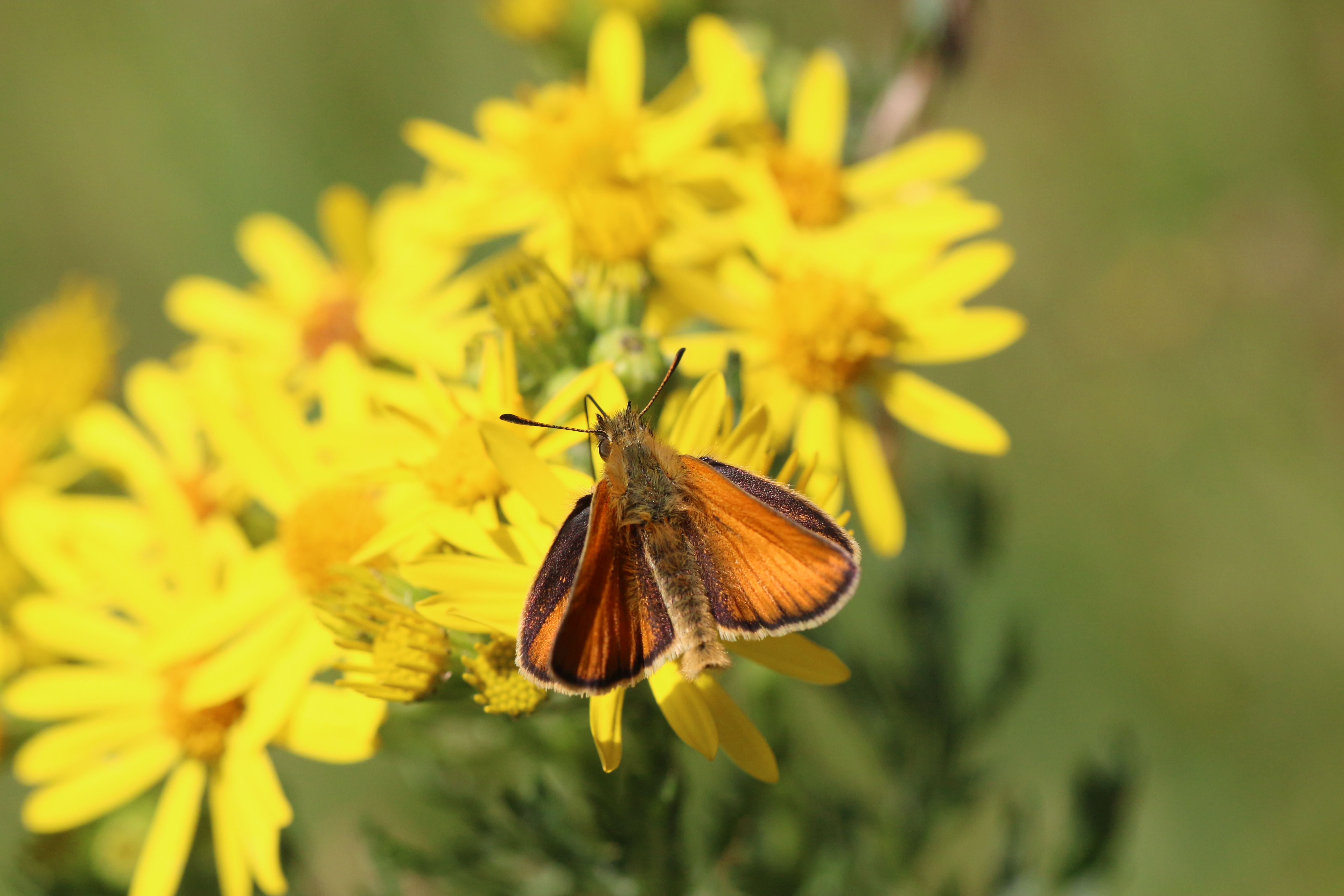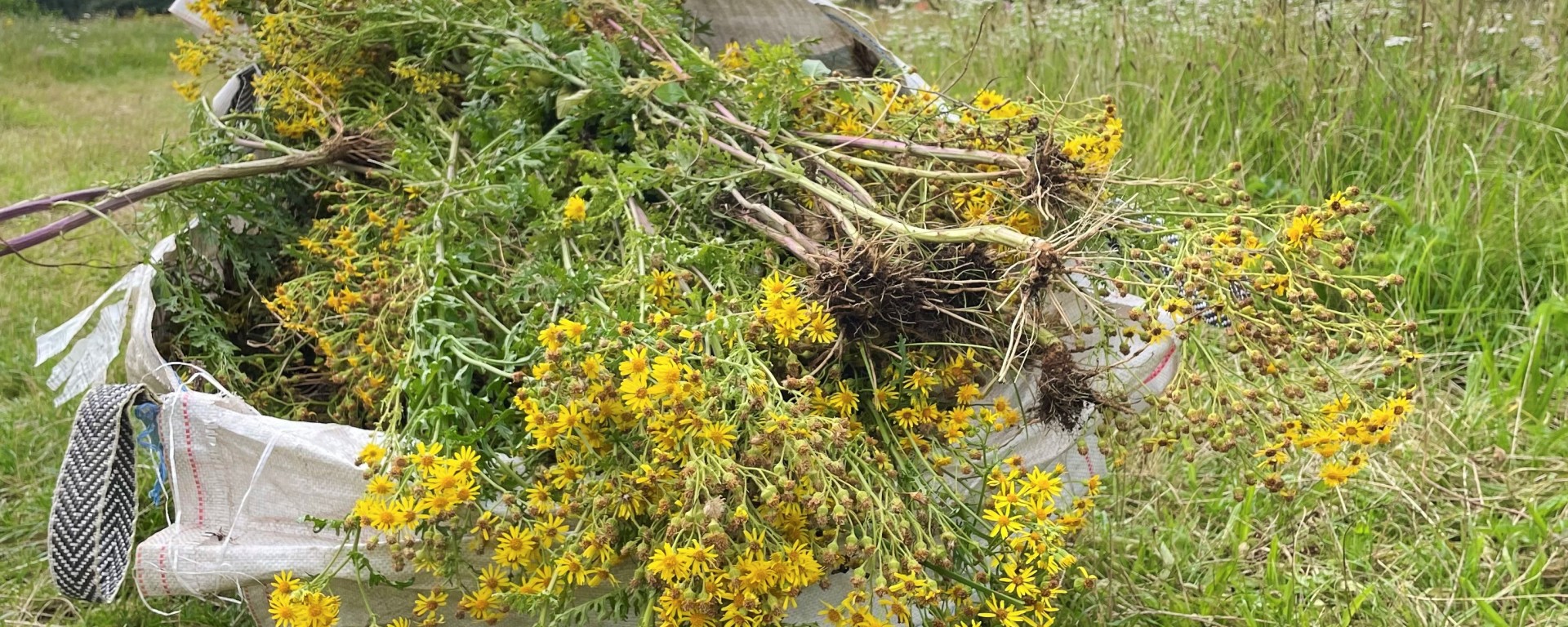In their latest research, Nicholas Balfour and Francis Ratnieks use multiple datasets to compare the biodiversity value of the plant species classified as ‘injurious weeds’ by the UK’s 1959 Weeds Act, with those species stipulated by DEFRA for pollinator targeted agri-environmental options.
In the UK, five species of native wildflowers are classified as “injurious weeds” in the 1959 Weeds Act. Three of them are frequently visited by many species of bees and other insects – ragwort (Jacobaea vulgaris) and two thistles (Cirsium arvense, C. vulgare). The other two are docks (Rumex crispus and R. obtusifolius), which are mainly wind-pollinated. All five are important larval foodplants for many insects, including several nationally rare or scarce species and the UK Biodiversity Action Plan species, the cinnabar moth (Tyria jacobaeae).
With growing recognition of this, financial support has been provided for farmers (in the UK and EU) to encourage wildlife on their agricultural land. For pollinating insects, funding has been available to sow wildflower mixes (e.g. “Flower-rich margins and plots”, “Autumn sown bumblebird mix”) with species such as red clover (Trifolium pratense) and wild marjoram (Origanum vulgare).

In our study, we quantify and identify the insects foraging on ragwort, the two thistles mentioned previously, and other wildflowers growing in six pasture or ex-pasture sites in East Sussex (UK). We found that both the abundance and diversity of pollinators visiting the weed species averaged twice that of the DEFRA recommended plants.
A subsequent analysis of scientific literature mirrored this result. The Database of Pollinator Interactions dataset showed that four times as many pollinator species and five times more conservation-listed species have been recorded visiting the three insect-pollinated weeds. Of the 387 plant species analysed, in terms of pollinator species recorded, the weeds were ranked 4th (C. arvense), 6th (J. vulgaris), and 13th (C. vulgare). Similarly, the Database of Insects and their Food Plants showed that twice as many herbivorous insect species are associated with the five weed species.
Several factors are probably responsible for this pattern. All five injurious weeds are widely distributed. The three insect-pollinated species have open flowers that allow access to a wide variety of species, and they produce, on average, four times more nectar sugar than the DEFRA recommended plant species.

Freedom of information requests to public bodies such as councils, Natural England and Highways England indicate that c. £10 million per year is spent controlling injurious weeds. Meanwhile, the cost of the four pollinator-targeted agri-environmental options in the UK exceeds £40m annually.
Alarmingly, most local councils indicated that they actively control ragwort, thus classing it in the same bracket as invasive, non-native species such as Japanese knotweed (Reynoutria japonica). This is very likely due to the Ragwort Control Bill 2003. As such, the implementation of this legislation probably deserves greater scrutiny, especially given that the evidence underpinning it is questionable.
Our results clearly show that weeds have an underappreciated value in supporting our natural biodiversity. Unfortunately, current UK agricultural policy encourages neither landsparing for, nor landsharing with, weeds. For example, DEFRA provided guidance on controlling weeds in agri-environmental areas managed for biodiversity.

The Environmental Land Management Scheme, to be rolled out for English farmers by the end of 2024, will largely replace the schemes currently available under the EU Common Agricultural Policy. This scheme aims to reward land managers to deliver, amongst other environmental benefits, “thriving plants and wildlife”. Given their value to biodiversity, we hope forthcoming policy changes will provide sufficient directives and financial incentives to persuade land managers to tolerate injurious weeds.
Any changes would, of course, need to consider the balance of practicality, cost (impacts on crop yields and plants of conservation concern), and benefits (effects on biodiversity, ecosystem services and direct cost savings) of weed toleration. Thus, the challenge of reconciling the conflicts between agricultural production and these native and biodiverse species should be a renewed priority to land managers, researchers and policymakers.
Despite their ecological value, many common UK wildflowers that are valuable to flower-visiting and herbivorous insects are often overlooked or even disliked, as exemplified by species such as ivy and bramble. Encouragingly, however, last summer the ‘Weed Thriller’ garden at the Royal Horticultural Society’s Tatton Park flower show, full of ragwort and other weed species, was awarded a gold medal.
Isabella Tree’s recent book ‘Wilding’ devoted an entire chapter to ragwort. A petition calling for the UK government to repeal the Weeds Act was halted only for the 2019 General Election. Hence, it appears there is a growing awareness amongst the British public of the conservation utility of a group of often maligned and underappreciated native wildflowers – weeds.

Read the full paper The disproportionate value of ‘weeds’ to pollinators and biodiversity in Journal of Applied Ecology

I have brambles and Spear thistle and confirm they are the go to plants, even more than borage. I also grew ragwort by mistake, which was colonised by cinnabar moth caterpillars so left; it is just starting to bloom. May I suggest privet blossom for investigation as I love the fragrance and that is popular with a host of flying creatures (garden birds seem to like it too, insect perhaps?). I did get permission from my landlord to allow these to grow; he is a farmer.
LikeLike